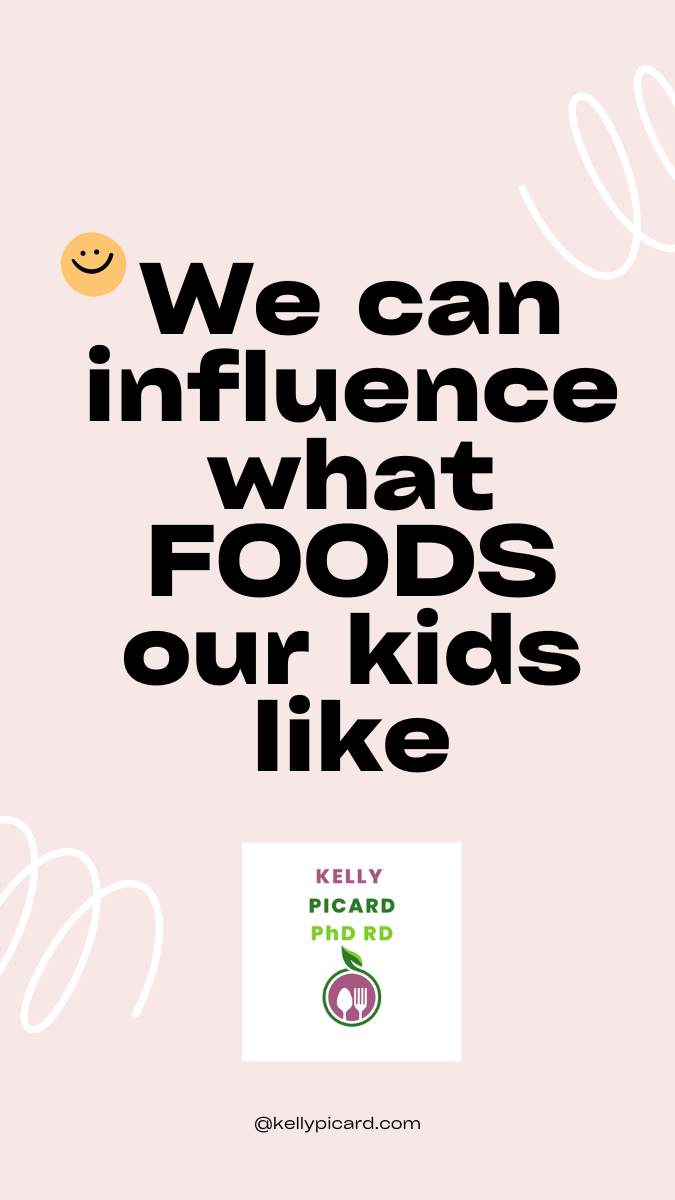Enjoying the foods we eat is part of eating a healthy diet. I frequently tell my clients that we eat for more than just nutrition. We eat because it tastes good and can give us pleasure and joy. A healthy diet that fails to bring us joy can’t be healthy because it removes a chance for us to feel good.
The pleasure of eating – a component of nurturing healthy eating in kids
In 2019, the Journal Appetite published a position statement about Nurturing Children’s Healthy Eating. This position statement includes four key components of how to nurture healthy eating in children. The fourth component is the pleasure of eating.
This position statement cites several papers and textbooks that support the importance of pleasure in healthy diets. This is because food choices are both driven (for example food cravings/what we are in the mood for) and reinforced (or rewarded/think “that tastes good!”) by the pleasure we experience from food. There is evidence that this is especially true for children.
The dimensions of pleasure in eating
The three dimensions in the pleasure children experience from eating:
- The sensory dimension (pleasure experienced from the look, smell and taste of foods)
- The social dimension (pleasure experienced from the social interactions while eating the food)
- The cognitive dimension (pleasure from the thoughts about the food)
The Sensory Dimension – That Taste’s Good!

The sensory dimension of pleasure from food comes from enjoying the way a food looks, smells and tastes.
Evidence suggests our food preferences are a combination of taste preferences we are born with and what we are exposed to while in the womb and in the first years of life.
Since I have such a sweet tooth – it makes me wonder if my mom ate a lot of brownies and fudge while she was pregnant with me….
Jokes aside though, as caregivers this means that we have some influence over what our children will think tastes good.
But this also means that our strategies for helping kids develop their preference for food taste will depend on the age of the child.
The Social Dimension – Eating Together
Eating for children is a social experience. This is true for infants who do not feed themselves and ideally for children as they grow up.
It can be really hard to keep eating together as children get bigger. This can be related to busy family schedules, juggling work, extra-curricular activities and even the desire for a later meal just with your partner.
Eating together doesn’t need to happen at every meal but the more often you do it, the more chances your child has to develop a positive association with healthy the foods you serve. And the stronger the positive association to more likely they will think those foods taste good.

The Cognitive Dimension – What we think about food

How we think about food changes whether or not we like it. This is particularly important when it comes to advertising. Evidence suggests that food ads that sell their products using cartoon characters or prizes tend to be perceived as tastier than products that don’t use these types of ads.
According to statista.com the most common source of ads consumed by children were on youtube – and that is far higher than the number of ads children saw on television.
Strategies to increase the pleasure of healthy foods by age
The table below outlines some strategies to help increase a children’s chances of finding nutritious foods pleasurable based on the age of the child. Though remember that some food preferences are innate – so you don’t have full control!
The key thing here is EXPOSURE! Kids like what they know and feel comfortable with.
| Age | Strategies |
| In utero (while in the womb) | – Eating healthy foods while pregnant helps increase the chances that your child will like those foods when they eat themselves. |
| Infancy (before they eat solids) | – Regardless of how babies are fed (breast milk or formula), they are exposed to the sights and smells of the foods around them. As a caregiver try to include nutritious foods in your diet so that your baby is exposed to them before they even eat them. |
| Children eating solids | – Serve kids nutritious foods repeatedly, even if they don’t eat them every time. By offering nutritious foods over and over kids are more likely to find them attractive over time. – Remember that taste is look too – so try to make it look appealing. – Some nutritious foods are a bit smelly (we had steamed broccoli the other night and I could still smell it in our house after coming in from a walk after dinner). If you are preparing new smelly foods for the first time, opening a window to reduce the smell might help. – Eat it yourself. Children learn to like the taste of foods that their caregivers eat, so make sure you are serving yourself the nutritious foods you want your child to eat – Eat with your child as much as you can. Keep those early dinners just for the kids saved for special occasions. If dinner is a challenge to eat with your child due to work schedules, could you aim for a family breakfast? or a family lunch? – When you do eat with your child, take some time to talk about the food and express your own enjoyment of it. – Look for strategies to minimize your child’s exposure to food ads. Streaming services (like Netflix or Disney) that don’t have ads are great or ad-blockers on tablets may also come in handy. |




One thought on “How to teach children to like the taste of healthy foods”